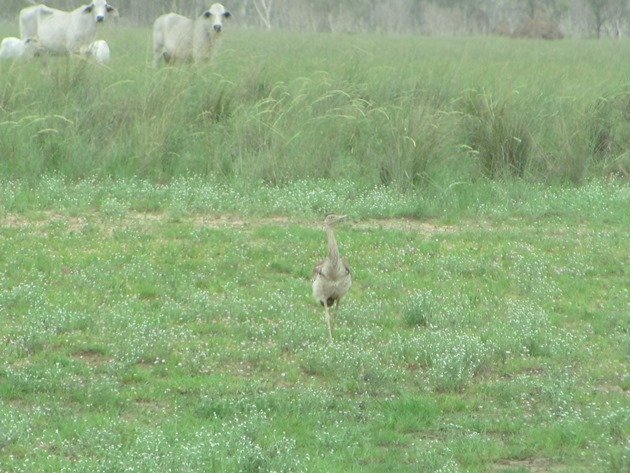
Australian Bustards-Ardeotis australis are one of those birds that you hope to see if you are in the north of Australia and often encounters are accidental as they move quietly through the grass finding food. You are more likely to find them walking than flying and they are the heaviest flying bird in Australia. The average weight of a male bird is 6.3 kilograms whereas the Wedge-tailed Eagle only weighs in at 5.8 kilograms! Male Australian Bustards can stand up to 120 centimetres tall and have a wingspan of 2.3 metres! The female is a smaller bird and they only breed once a year laying one large olive green egg. The male birds are polygynous and it is truly impressive if you are lucky enough to see them display by puffing out their throat. The Australian Bustard flies with a slow, heavy flight and the wing beat can be heard as they take off if you accidentally surprise them. Usually our encounters with Australian Bustards are in the late evening or early morning at ephemeral lakes when they come in to have a drink. They approach the water hesitantly and then drop down to drink.
Australian Bustard drinking
They are omnivorous and will follow plagues of mice or locusts and have been known to eat the invasive pest the Cane Toad without ill-effect. Their numbers have plummeted since European settlement due to shooting and the Cane Toad numbers have increased, so sadly the Australian Bustard is not an answer to the Cane Toad problem. After recent rains to the north of Broome we have encountered huge plagues of grasshoppers and the road has been black in sections where they are accumulating. Once these grasshoppers are flying you soon hit large plagues of the locusts and the front of your vehicle soon resembles what would happen if you hit a giant pizza!
Thousands of grasshoppers along the edge of the road
Due to the large numbers of grasshoppers we have been encountering larger numbers of Australian Bustards and on dull days they can be found in small groups rather than singularly. Recently we had six Australian Bustards wandering the open grass feasting on these grasshoppers and locusts in the middle of the day.
Australian Bustards
As you can see the land has started to look lush after the recent Wet Season rain and the Australian Bustards are taking advantage of the recently hatched grasshoppers! This is the best time of year for finding this iconic species in the north of Australia! They can be seen wandering the edge of the highway and due care needs to be taken so that you do not hit them. I hope that you all get to see this magnificent bird one day!

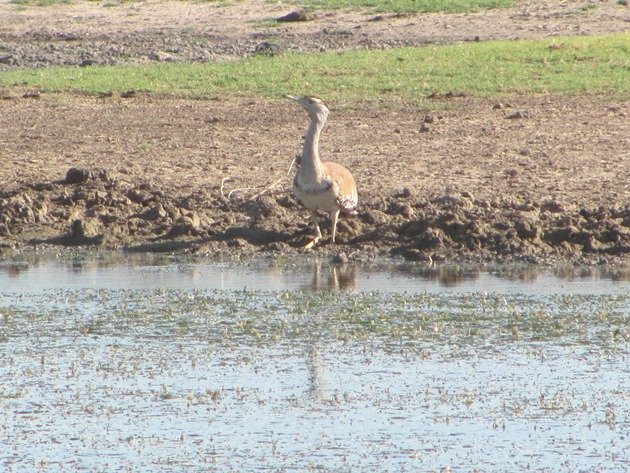
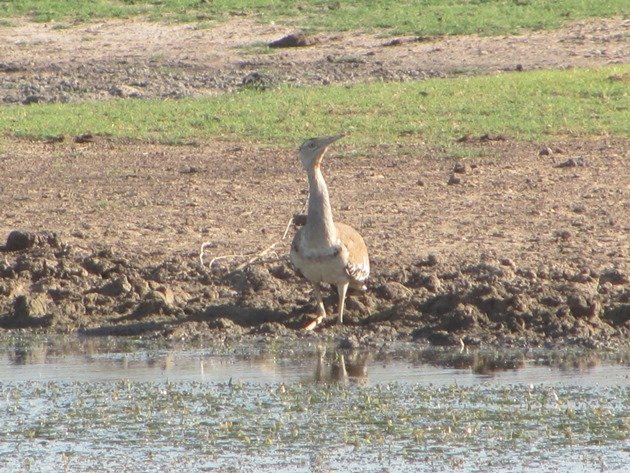
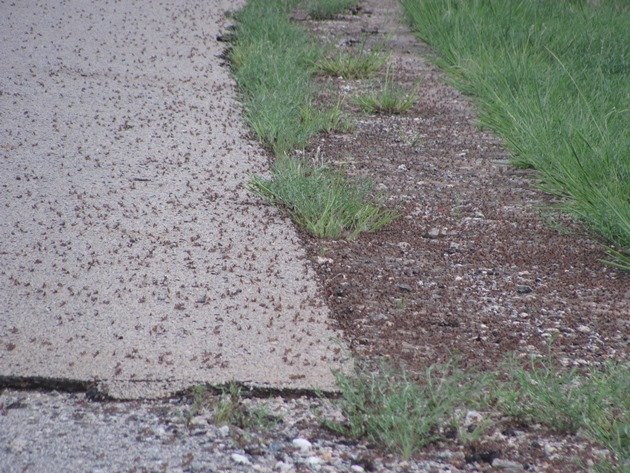
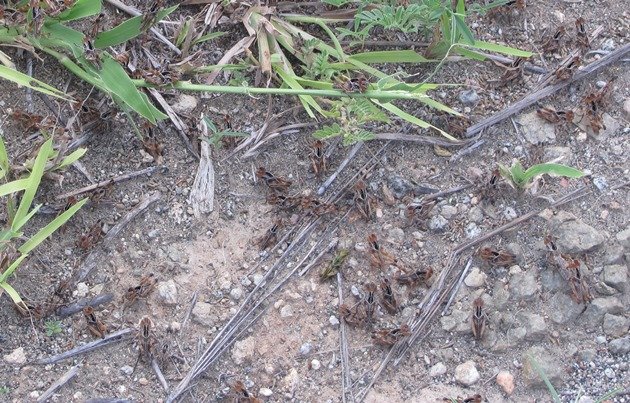
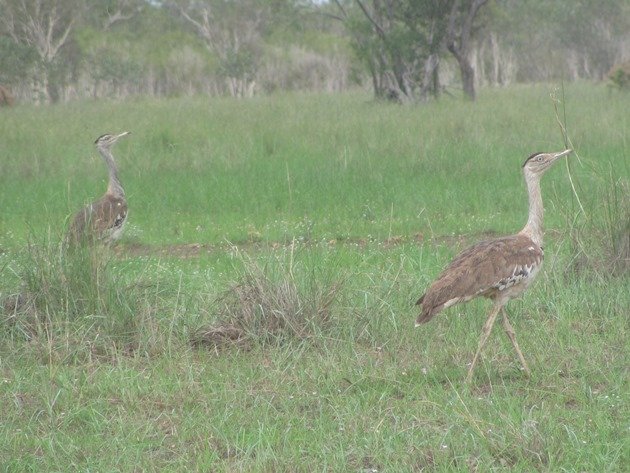
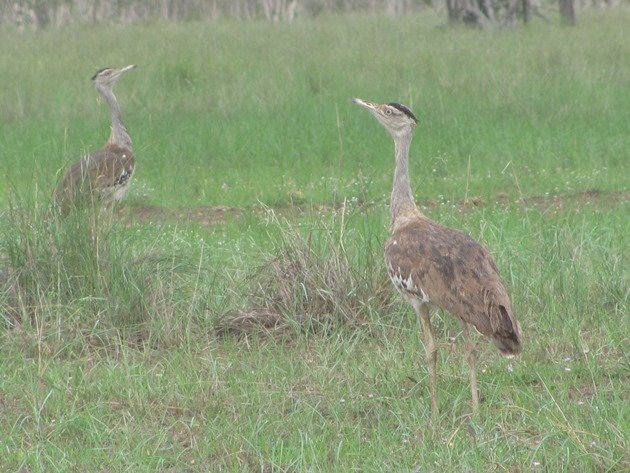
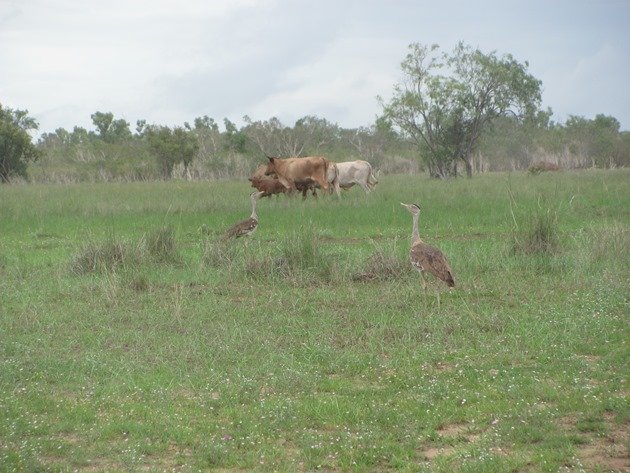
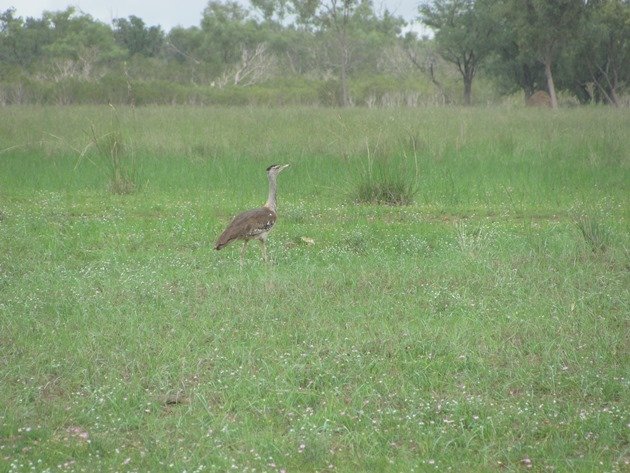
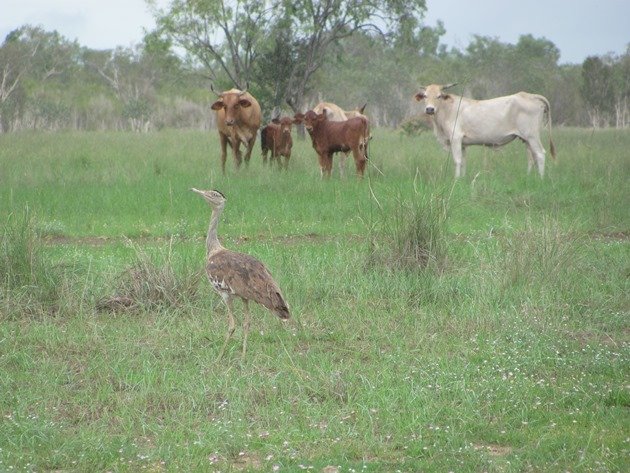
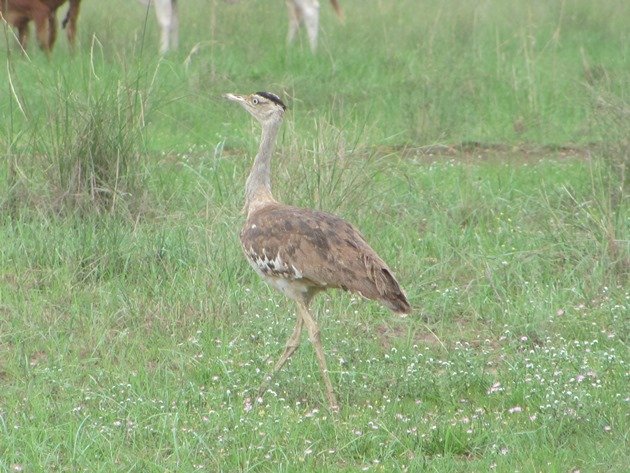
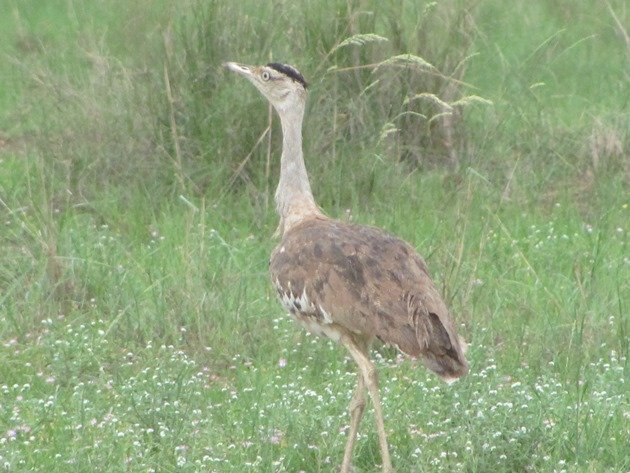










That sure would be nice to see!
Thanks, Pat. They are magnificent birds!
Oh wow! Do you often get so close to them?
Yes, especially early or late in the day at ephemeral lakes! 🙂
I love this species, the first one I saw narrowly avoided being hit by a Greyhound bus. Luckily the next one I saw was much safer,
So good to know you have seen them! We have never seen one that has been hit by a vehicle, so they must be good at getting out of the way! They do walk the edge of the road, so amazing they don’t become roadkill.
I need this one – that is the only Ardeotis species I haven’t observed!
Looks like you need to head “down under” then! 🙂
Contact Nyul nyul rangers, Beagle bay nr broome for this species and other rare ones eg painted snipe, black bittern, Gouldian finch near ephemeral lakes